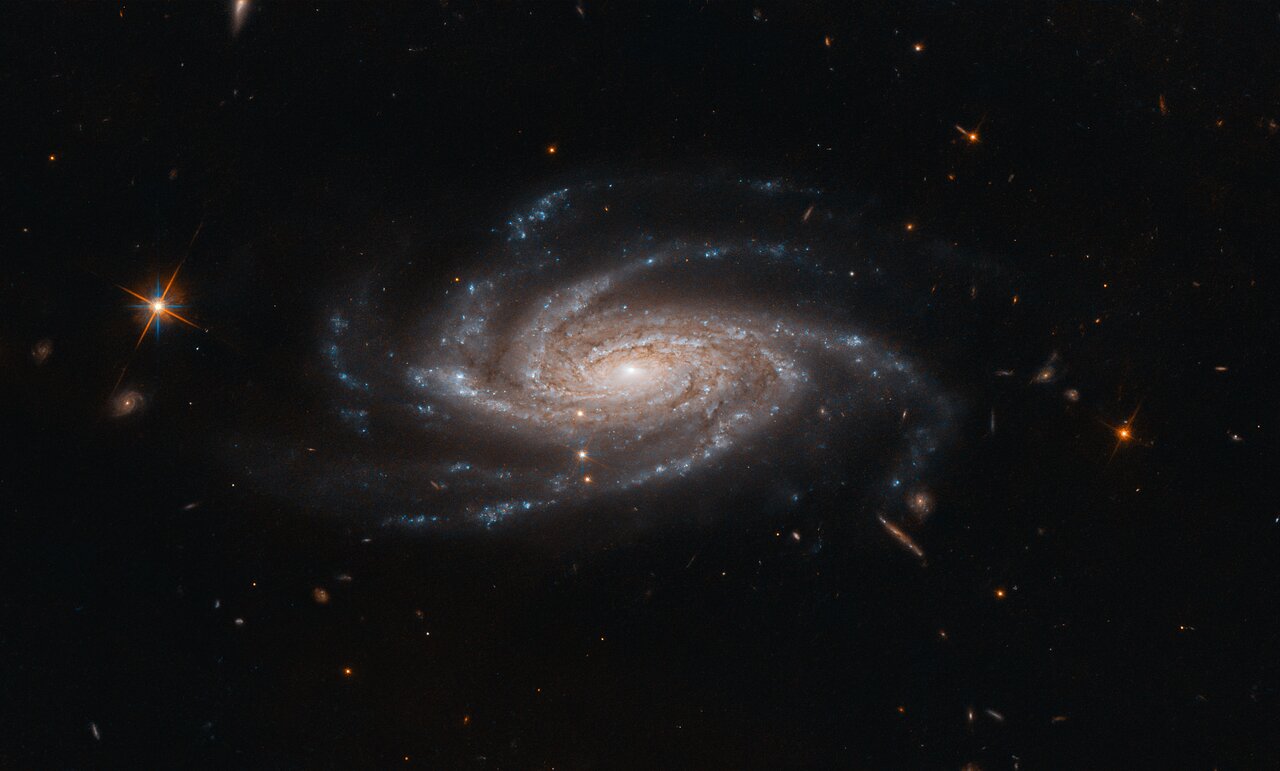
The Hubble Space Telescope has captured this image of the beautiful spiral galaxy NGC 2008, located 425 million light-years away in the constellation of Pictor (The Painter’s Easel). In the image, you can see the glowing nucleus of the galaxy’s center, with arms of stars and dust reaching out from this, in a form that is distinctive to spiral galaxies.
Spiral galaxies have nearly identical arms that reach out from the galactic center. In this case, the galaxy is seen titled at a slight angle, so the arms at the bottom of the image are closer to Earth than those at the top. These arms are dotted with regions of star formation, where clouds of ionized gas collapse due to gravitational forces and form the basis of new stars. The ionized gas glows with infrared light due to the heat generated by the stars within it.
There are three different types of spiral galaxy: Sa, Sb, and Sc. Sa galaxies are those with arms that sit close to a large central nucleus, while Sc galaxies have long, loose arms which spread from a smaller nucleus. Sb galaxies are those in between the two. The galaxy NGC 2008 is an Sc galaxy, with a smaller central bulge and open spiral arms. The bulge consists of older, dimmer stars, which in most cases surround a supermassive black hole that lies right at the heart of the galaxy.
Spiral galaxies are among the most common types of galaxy, with around 70% of all observed galaxies being in a spiral form. Our galaxy, the Milky Way, is also a spiral galaxy, but it has a special feature called a bar, in which the central region of the galaxy has a block of dust and gas where new stars form. Around two-thirds of spiral galaxies have such a bar, which spreads across the center of the galaxy and from which the arms radiate. Other famous spiral galaxies include the Andromeda galaxy, the Pinwheel galaxy, and the Triangulum galaxy.



